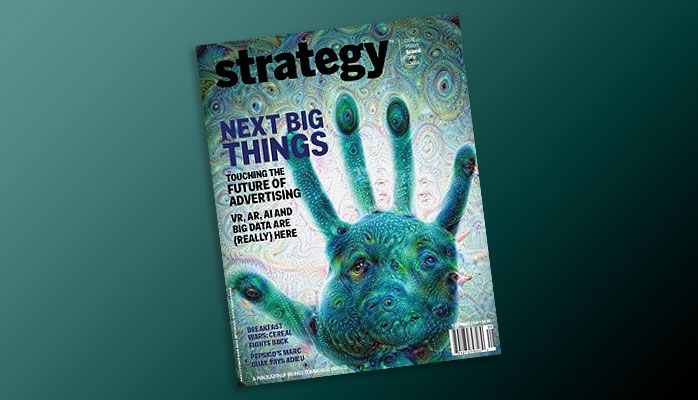Originally written and published in Strategy Magazine, September 2015 “Next Big Things” issue and also featured on their website.
Automated creativity is changing a digital creative’s role. Universally accessible big data, app development and faster cross-platform server-side coding platforms have allowed us to work with more automated processes in real-time. Early systems are already letting retail clients create online campaigns from customizable experiences and automated media builders, as well as use dynamic built-in testing of various versions offered by many SaaS cos.
Right now, these systems rely on agencies to create large libraries of completed assets such as banners, social ads, videos or a mobile version. We spend our grunt hours and client money manually creating dozens of them, each with alternate messaging.
What we’re starting to move towards is true real-time content creation: libraries not filled with finished singular assets, but a collection of sub-components that dynamically form to create the finished ad unit or experience. Not the kind of variety we see in the latest media-serving case study, but true user data-based experience delivery with little need to monitor or update manually.
Say Toyota set up every dealer franchise website and media hosting on a single platform. They could connect to a trusted auto feed to access every car image and specification, and build out an initial library of individual, brand-approved styles and assets. Then, with coded logic, we would change each user’s experience based on their interactions in real-time on the micro level: vehicle trim based on colours they research, button sizes, headlines and copy compositions that grabbed their attention, as well as offer hierarchy, types of embedded content and decide what not to show. Similar to how current re-marketing display ads offer up a link back, but even more granular into the marketing message’s DNA.
A creative team’s role won’t be devising a single clever campaign, but to better optimize input and output of content creation systems with a human touch.
It means forcing results based on live consumer data and creative intent, not creative mandate.
Originally written and published in Strategy Magazine, Issue September 2015 and also featured on their website: http://strategyonline.ca/2015/09/02/next-big-things-creativity-gets-automated/
